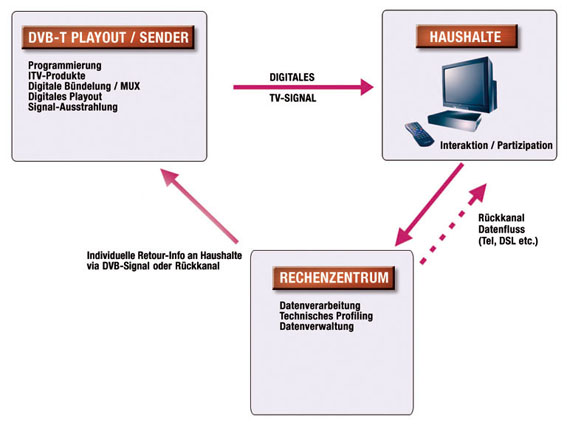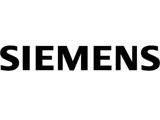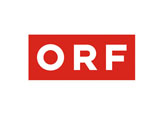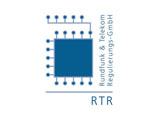The ITV production cycle
Interactive television clearly has to be designed in a way which accommodates the needs of consumers, that is,
those who use the services: The viewer turns on the television set, settles into a comfortable chair with the remote control, and the interactive process begins. The various buttons of the remote can be used to retrieve the desired information, features, photos, and graphics related to the current show in a matter of seconds. One button gives the viewer access to the latest news, another provides a program guide for the next week sorted by genre, and still another allows the viewer to take part in online opinion surveys and quizzes concerning the show they are watching, to vote for a film request of the week, or to access additional information on a show or even a commercial advertisement.
ITV – as easy as TV
In this process, the viewer is not meant to be aware of the fact that this system requires immensely complicated technical systems and dozens of servers to interact, miles of network lines to be installed, and the hard-won know-how of hundreds of technicians, programmers, designers and journalists to be projected instantly on the screen in a single, compressed product. ITV has to be as simple as television itself, otherwise the new digital products might not be accepted by the viewer.
Interactive television clearly has to be designed in a way which accommodates the needs of consumers, that is,
those who use the services: The viewer turns on the television set, settles into a comfortable chair with the remote control, and the interactive process begins. The various buttons of the remote can be used to retrieve the desired information, features, photos, and graphics related to the current show in a matter of seconds. One button gives the viewer access to the latest news, another provides a program guide for the next week sorted by genre, and still another allows the viewer to take part in online opinion surveys and quizzes concerning the show they are watching, to vote for a film request of the week, or to access additional information on a show or even a commercial advertisement.
ITV – as easy as TV
In this process, the viewer is not meant to be aware of the fact that this system requires immensely complicated technical systems and dozens of servers to interact, miles of network lines to be installed, and the hard-won know-how of hundreds of technicians, programmers, designers and journalists to be projected instantly on the screen in a single, compressed product. ITV has to be as simple as television itself, otherwise the new digital products might not be accepted by the viewer.




